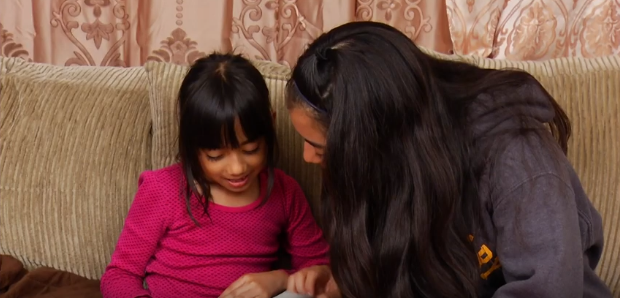New Haven, Conn. (Ivanhoe Newswire)—There’s a body of research that suggests that by the time kids start school they prefer kids who look most like themselves. How and why do those biases in favor of certain genders and races begin? And how can parents support kids in a way that will widen their social group?
It’s a viral video that almost broke the internet. Two toddler best friends, one white and one black, running toward each other for hugs.
“If you don’t look the same on the outside, it’s okay, because you look the same on the inside,” said six-year-old Mila Moglia.
“We’re clearly in a really specific moment in our country’s history where issues around discrimination and prejudice, especially focused on race and racial injustice are really front and center,” shared Yarrow Dunham, Ed.D., Director of Social Cognitive Development Lab, Yale University.
Dunham studies children and acceptance of racial and gender differences.
“Our children are actively trying to make sense of a really, really complicated social world and they’re taking a lot of cues from us and from the information we provide them,” continued Dunham.
Dunham and his team say kids themselves play an active role in choosing the information they consume. The researchers studied whether young children preferred information that favored the group with whom they identified. Five and six-year-olds were randomly given a yellow scarf or green scarf, and they were assigned to read two different books. One book was written by someone who really liked the yellow group, and the other book painted the green group in a favorable light. Then, the researchers asked the kids which book they would like to listen to.
“So merely by randomly assigning a kid to say the yellow group, if you then ask kids, which group do you like better? Kids will prefer members of their own group,” explained Dunham.
In fact, the researchers found that 80 percent of the kids chose to hear the story favoring their own group, and after hearing that story, they preferred their own group even more strongly. Dunham says parents should ensure their children have access to books, toys, games, and movies that feature a diverse group of people and guide their kids in ways that supports inclusion.
For parents looking for a good place to start, Common Sense Media lists books that promote diversity and inclusion on their website commonsensemedia.org. This was a small study, conducted in a rural, predominantly white area. Research with a more diverse sample is still needed.
Contributors to this news report include: Cyndy McGrath, Executive Producer; Kirk Manson, Field Producer; and Matt Goldschmidt, Editor.
Produced by Child Trends News Service in partnership with Ivanhoe Broadcast News and funded by a grant from the National Science Foundation
Source: https://onlinelibrary.wiley.com/doi/abs/10.1111/desc.12580

